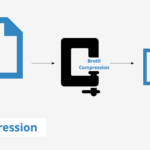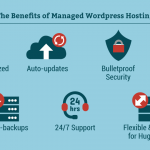Earlier this year RedyHost implemented Nginx web server with Brotli compression. Brotli offers better compression rates over Gzip, of up to 39% on an average. What this means is that every page of your website served with Brotli compression On, will be up to 39% smaller, loading faster, resulting in a better user experience. Check the Akamai blog post Understanding Brotli’s Potential, which has full details of Brotli versus Gzip benchmarks. How to ensure Brotli is enabled for your website All our hosting plans include Brotli support out of the box. However, Brotli requires HTTPS to work. If you have […]
Continue readingManaged WordPress as a Service benchmarking results
Following our recent announcement of the WordPress as a Service offering, we benchmarked the Free WordPress as a Service plan and now publish the results. WordPress as a Service – Introduction WordPress as a Service plans offer the variety of server resource allocation, such as CPU, RAM, cloud web space. The introduced four plans are: Free WordPress Silver WordPress Gold WordPress Platinum WordPress Every account runs a single WordPress website in a container isolated environment, which implies the server resource cap. For example, the Free WordPress comes with 1ECU and 512MB or RAM. The top-range Platinum WordPress comes with 20ECU […]
Continue readingIntroducing WordPress as a Service – managed wordpress hosting
Announcing new WordPress as a Service hosting. Fully managed and maintained Wordpress! WordPress as a Service is auto-provisioned, while you signup via the RedyHost website. In a minute or two, as you sign up, our system provisions a fully managed account and installs a lightweight and latest Wordpress. You only provide your website domain name and username/password during the signup process. Once sign up is complete, you navigate to your new Wordpress website and start blogging.
Continue readingHTTPS everywhere: Encrypt all traffic with free SSL
The LetsEncrypt CA, allows anyone to obtain and renew free SSL certificates, whether you use a private server or a shared host powered by cPanel
Continue readingSet up your caches for (much) faster website loading
These days, when the server performance achieves absolutely incredible levels, the real performance lives where the client-side optimisation and caching is. NGINX is a commonly used as web content caches, ranging from individual websites to some of the largest content delivery networks (CDNs) in the world, such as MaxCDN and CloudFlare. According to The Benefits of Microcaching with NGINX, a WordPress website could be sped up around 400x times. Nginx microcaching setup To set up your caches for (much) faster website loading and get a good SEO ranking, RedyHost offers a number of ways to easy configure efficient website caching. We use Nginx for this. […]
Continue reading2016 Monthly Network uptime updates
Our guaranteed network and hardware uptime is 99.95% for Managed Secure VPS customers and 99.9% for Cloud VPS and cPanel shared hosting customers. Monthly uptime statistics breakdown January 2015: 100% February 2015: 100% March 2015: 100% April 2015: 100% May 2015: 100% June 2015: 100% July 2015: 100% August 2015: 100% September 2015: 100% October 2015: 100% November 2015: 100% December 2015: 100% 100% 2016 average uptime
Continue readingWishing you happy and prosperous 2017!
2016 was a big year for RedyHost as we continued to help build a faster and more secure Internet for our users. Here are some highlights from the year: Cloud hardware upgrade In February 2016 our entire cloud platform was rebuilt with the latest hardware. We introduced the latest hardware compute nodes. We continued with rebuilding our Cloud storage systems using full-SSD drives, with added ZFS storage and backup solutions on top of it for the unbeatable performance. Throughout 2016 we’ve been building a CloudVPS Management system, to give a lot of control to our Cloud VPS customers, featuring Cloud VPS power management Live snapshots and […]
Continue readingAnnouncing Long term support for Drupal 6
Since the long awaited Drupal 8 came out, Drupal 6 reached its end of life (at the end of Feb 2016). Up until now, In order to keep Drupal 6 websites secure, the only choice was to upgrade any Drupal 6 (or Drupal 5) site to the supported version, either Drupal 7 or Drupal 8. However, as outlined and well reasoned in this article, you may want to wait and don’t upgrade to Drupal 7 or 8 as yet. Virtual Just in Time Patching In our past article, we outlined how VJITP (Virtual Just in Time Patching) works. Briefly, the VJITP is […]
Continue reading





